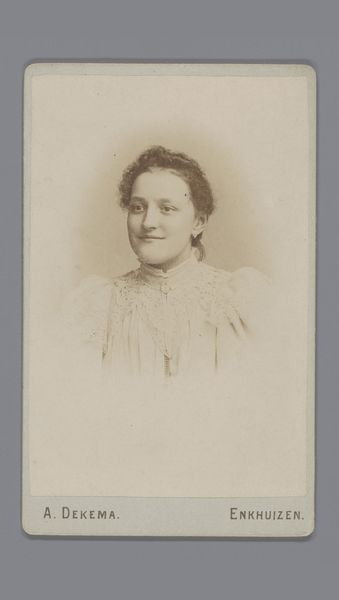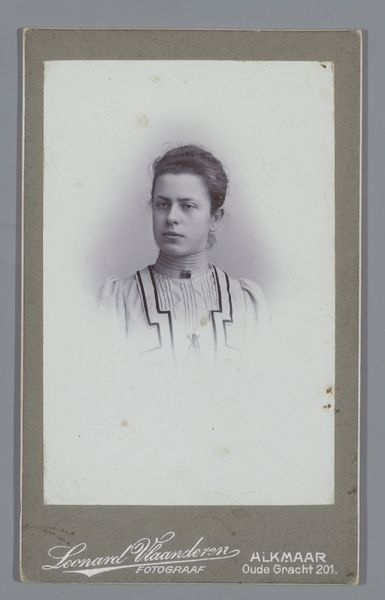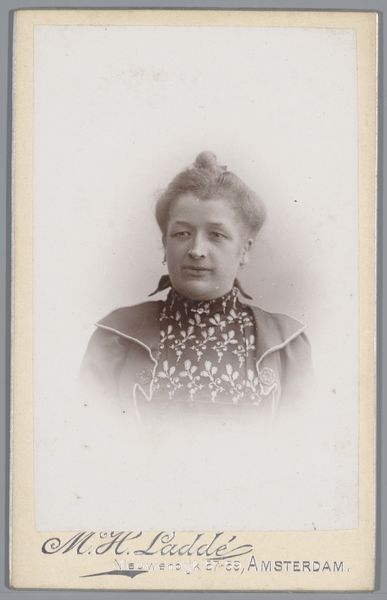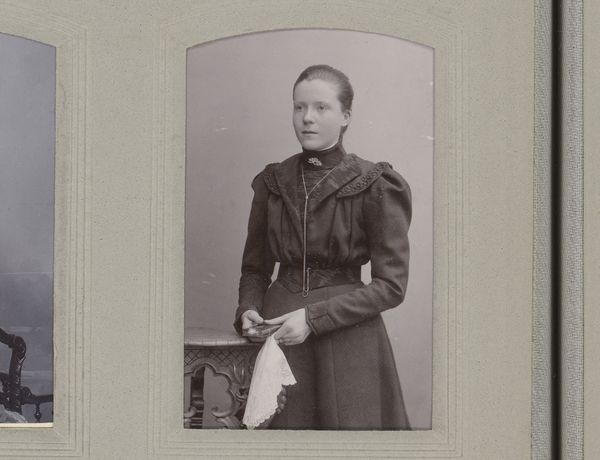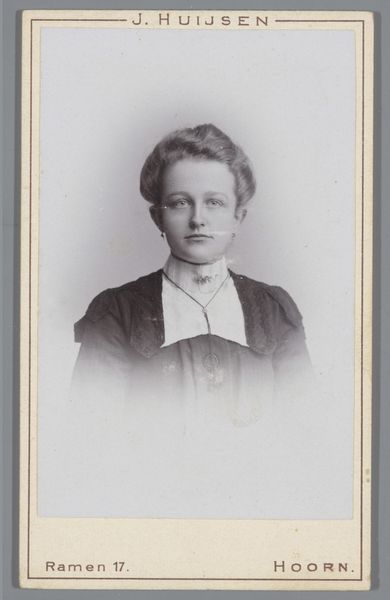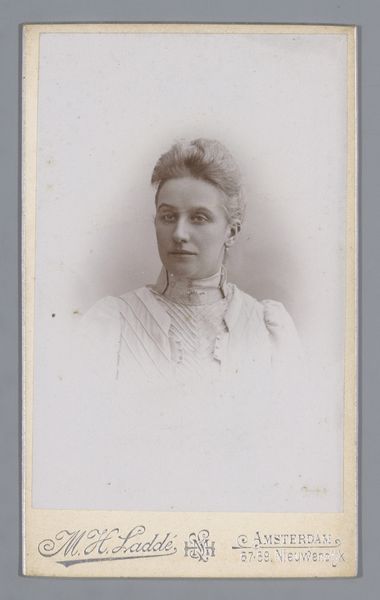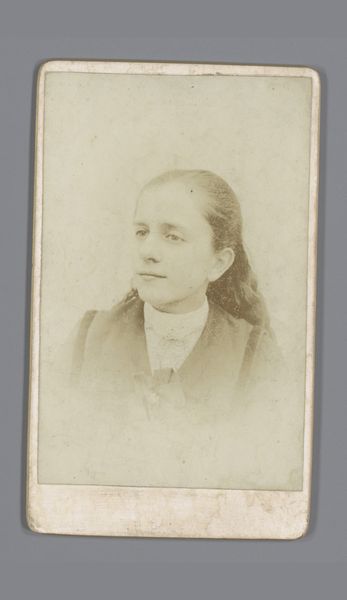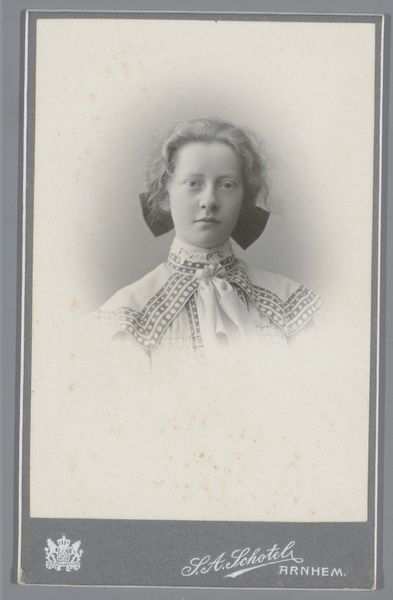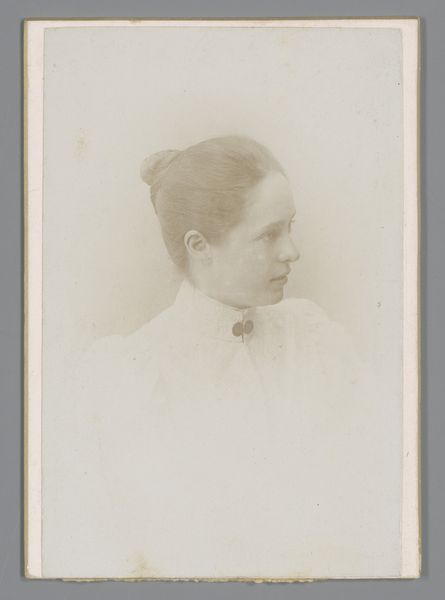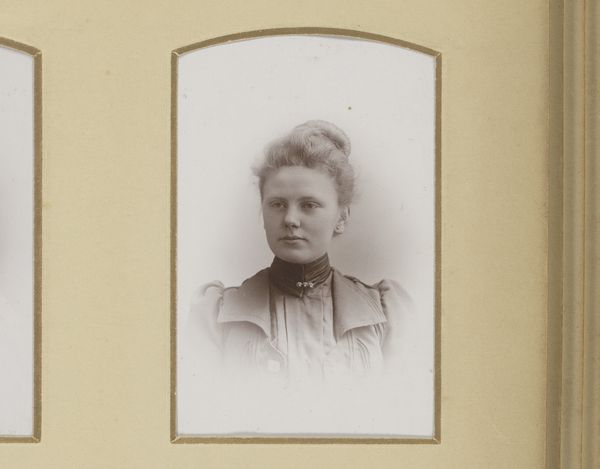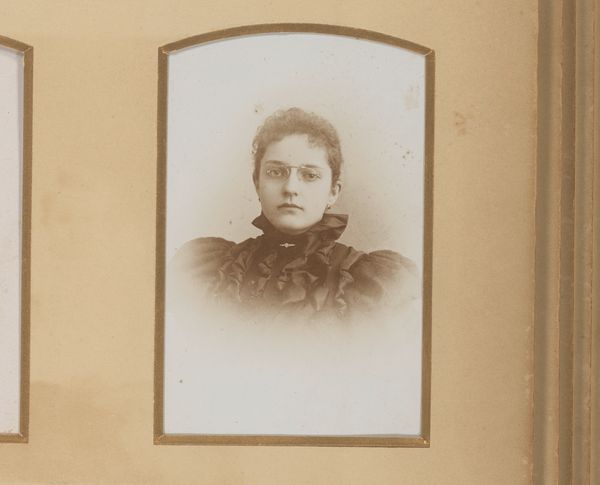
photography
#
photography
Dimensions: height 165 mm, width 107 mm
Copyright: Rijks Museum: Open Domain
Curator: What strikes me immediately is the tonal range. The sepia-toned image yields a sense of understated formality, quite typical of the late 19th century. Editor: Indeed. This is a photograph by E. van Elfrinkhoff, entitled "Portret van een onbekende vrouw" and dated sometime between 1888 and 1900. I find myself wondering who this woman might have been, and what social and historical forces shaped her life, her very pose. Curator: Well, there's a clarity in the way her features are delineated, balanced with this overall softness. Look at the subtle fall of light across her cheek – a play of shadow which animates her face with delicate expression. The composition relies so heavily on nuanced lighting; the lack of vibrant color directs focus to texture and form. Editor: Yes, but considering the late Victorian era’s constraints on women, this image is compelling. Photography offered women opportunities both as subjects and practitioners. The woman’s gaze, though direct, seems to hold a certain vulnerability—a common theme for women whose roles were dictated by patriarchal structures. What was she thinking, working, aspiring to, in a world which systemically oppressed her? Curator: While acknowledging your contextual lens, it’s still difficult to overlook the aesthetic control. The soft, diffused focus imparts a sense of idealized beauty. This formal choice seems almost calculated, to produce an impression of timeless elegance within such constraints. The high collar is striking, as is her dress. Editor: Elegance as resistance? Dress was a visual signifier—material that represented her class and potential for self-expression and subversion, regardless of any pre-established aesthetic principle. I suppose, given the historical epoch and the sitter's probable class, there could very well be many kinds of limitations at play. Curator: I can appreciate how the composition communicates a sense of refinement through these deliberate choices in shading, posing and dress. Regardless of its socio-historic conditions, what ultimately makes it succeed, at least for me, is that enduring play of shadow and light. Editor: Absolutely. I find that acknowledging that very interplay within her specific historicized identity—as subject, photographer, and woman within Victorian society—allows for a richer understanding.
Comments
No comments
Be the first to comment and join the conversation on the ultimate creative platform.
